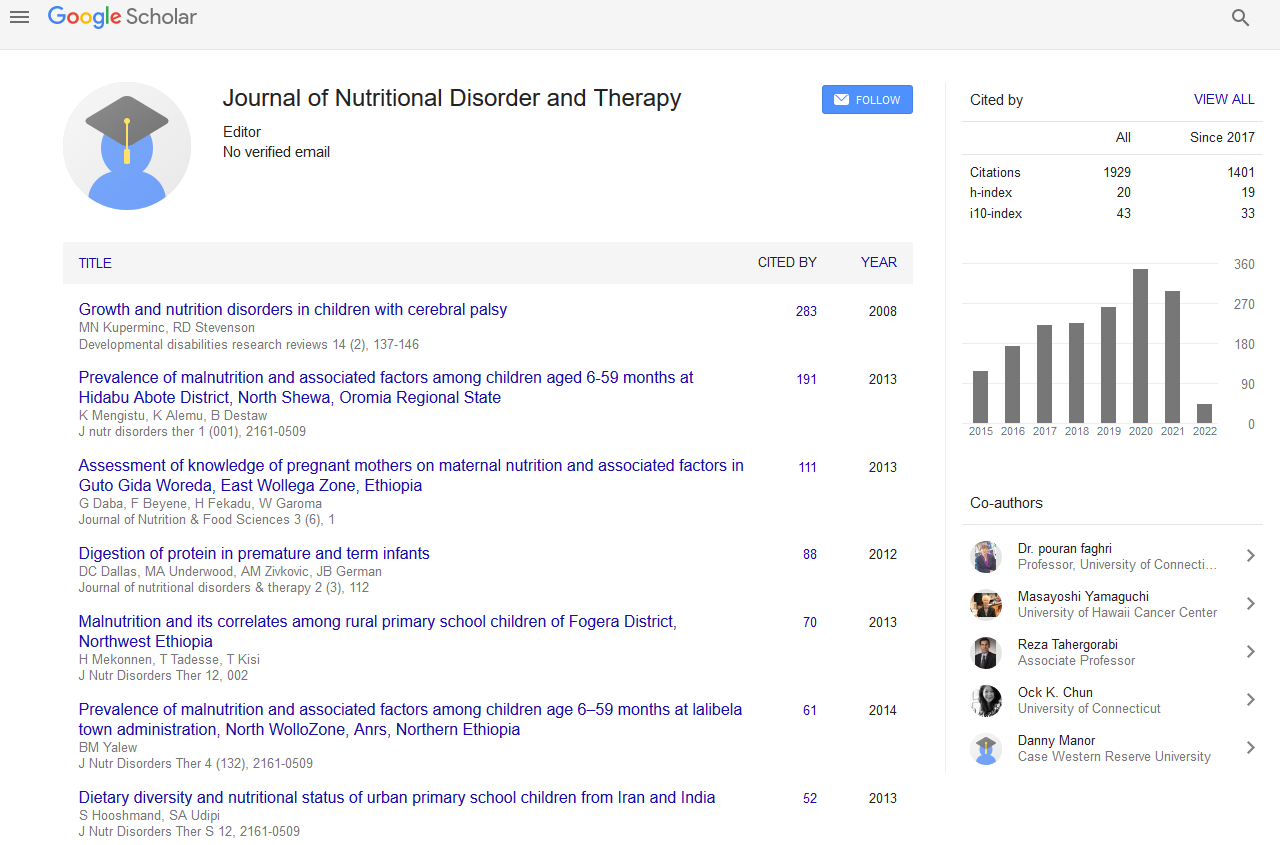Indexed In
- Open J Gate
- Genamics JournalSeek
- Academic Keys
- JournalTOCs
- Ulrich's Periodicals Directory
- RefSeek
- Hamdard University
- EBSCO A-Z
- OCLC- WorldCat
- Publons
- Geneva Foundation for Medical Education and Research
- Euro Pub
Useful Links
Share This Page
Journal Flyer

Open Access Journals
- Agri and Aquaculture
- Biochemistry
- Bioinformatics & Systems Biology
- Business & Management
- Chemistry
- Clinical Sciences
- Engineering
- Food & Nutrition
- General Science
- Genetics & Molecular Biology
- Immunology & Microbiology
- Medical Sciences
- Neuroscience & Psychology
- Nursing & Health Care
- Pharmaceutical Sciences
Abstract
Vitamin B12 Deficiency in Pregnancy and Lactation: Is there a Need for Pre and Post-natal Supplementation?
Towfida J Siddiqua, Lindsay H Allen, Rubhana Raqib and Tahmeed Ahmed
This article reviews vitamin B12 (B12) status and deficiency during pregnancy and lactation, its effect on
pregnancy, and the health of the offspring, with the aim to underscore the need for a sustainable strategy to improve maternal and infant vitamin B12 status of low and middle income countries. Vitamin B12 is a basic nutrient required for maintenance of normal erythropoiesis, cell reproduction, nucleoprotein and myelin synthesis. B12 deficiency is associated with adverse pregnancy outcomes and neurodevelopmental morbidity during infancy. Very few studies have indicated that B12 deficiency may contribute to altered immune responses in animals and humans. Additionally, no studies have shown modulation of infant motor development in response to maternal B12 supplementation. Despite the high global prevalence of B12 deficiency and its serious effects on pregnant women and offspring, there is still no consensus on the cut-off of biochemical markers (indicator of B12 deficiency) to correctly diagnose B12 deficiency in mother-infant dyad. Also, the optimum dose of B12 to normalize B12 status of mother-infant pairs in a deficient population is not known yet. In addition, markers of other functions such as neurodevelopment, immune response that may be affected by vitamin B12 deficiency should be measured to determine if they respond to supplementation. Thus, there is an urgent need to conduct more trials to find out the optimum dose, to investigate whether intervention with such pre-and post natal vitamin B12 supplementation would improve maternal, neonatal and child health outcomes in population at risk, giving emphasis on neurological processes, immune functions and epigenetic modifications. Other strategies including food based approach also require evidence based results which will help to understand effectiveness of a targeted and well-designed intervention among this population.


